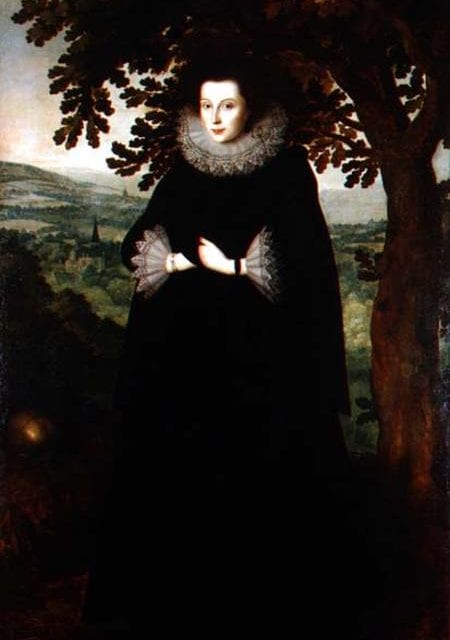

You know how it is – you flip through the family photograph album and suddenly you come across that old snap, a woman standing in the back garden. She’s definitely a relative – she’s got grandma’s nose and cousin Edith’s smile, but who is she? Well the St John’s have just such a portrait.
The medieval Mapledurham manor house near Reading was partially demolished in the 17th century as successive members of the Blount family renovated and rebuilt the property but for more than 200 years a full length portrait of Lady St John of Bletso hung in the dining room. Attributed to William Larkin, dubbed the ‘Curtain Master,’ for placing his sitters framed by shiny drapes and a carpet boarder, this Lady somewhat unusually stands against a woodland backdrop.
In 1969/70 the portrait went on loan to the Tate Gallery for ‘The Elizabethan Image’ exhibition and in 1985 was part of the Treasure House of Britain exhibition at the National Gallery of Art in Washington, DC. In the catalogue that accompanied that exhibition art historian Sir Roy Strong questioned the identity of the lady in black and suggested she might be Anne Leighton, first wife of Sir John St John, 1st Baronet.
Sir Roy compares the Mapledurham portrait with the representation of Anne on the St John polyptych, also thought to have been painted by William Larkin.
Unfortunately the polyptych has been subject to 400 years of fiddling and fussing and considerable overpainting with copious amounts of varnish applied to the portrait. Conservation work in the 1980s saw most of the damage reversed, but sadly the portrait of Anne had suffered the most. She appears with a ghostly white face on the arm of her husband , but a comparison of the fashion bears up well to the Mapledurham matron.
What do you think? I think she has her mother’s eyes.